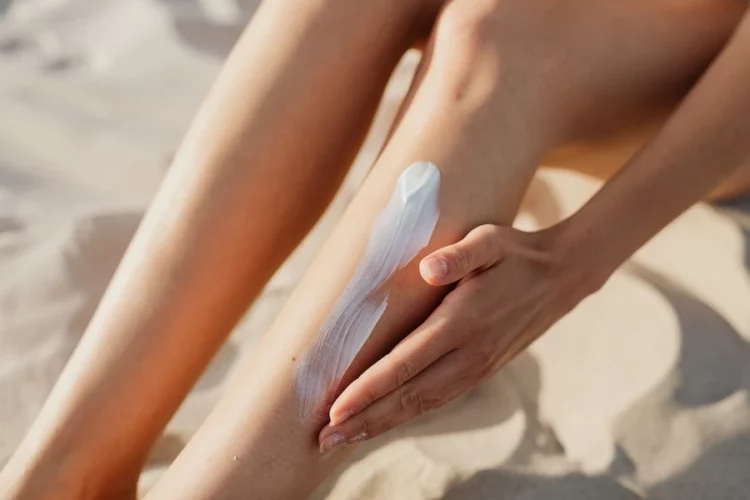Are you looking for the best way to protect your skin from the sun’s harmful rays? Sunscreen lotion is essential to any skincare routine, and knowing how to apply it properly can make all the difference in optimal protection.
In this blog post, we will discuss eight tips for applying sunscreen lotions for optimal protection to enjoy the summer with peace of mind.
Choose The Right Sunscreen.
It is essential to choose the right sunscreen to protect your skin. When selecting sunscreen, you must consider the type of protection you need and the activity you will be doing. Sunscreens come in various forms, such as lotions, creams, gels, sprays, sticks, and powders.
Depending on the activity you are participating in, you may need to choose a waterproof sunscreen. It is also essential to pay attention to the SPF (sun protection factor) is also necessary. Generally, SPF 30 provides adequate protection for most activities, while higher SPF values are recommended for more intense sun exposure.
When selecting the best sunscreen for your needs, it is essential to remember that there is no one-size-fits-all solution. Doing research ahead of time and choosing the best sunscreen for your needs can protect your skin from the sun’s harmful rays.
Apply Sunscreen Before Going Outdoors
It is essential to apply sunscreen before you go outside. Sunscreen forms a protective layer on your skin, protecting it from harmful UV rays.
The longer you wait to apply sunscreen, the less protection it will provide. Ideally, apply sunscreen for about 15 minutes before heading outside. This gives the active ingredients time to bond with your skin, providing the best protection.
Make sure you apply a generous amount of sunscreen and rub it evenly over all exposed areas of your skin. Don’t forget to include your ears, nose, lips, and scalp if you are bald or have thinning hair.
Apply Sunscreen Generously.
When applying sunscreen, it is vital to apply it generously. Most experts recommend using at least one ounce (or a shot glass full) of sunscreen for your whole body.
Be sure to cover all exposed areas, including your face, neck, ears, hands, feet, and any other areas that may be exposed to the sun. Pay particular attention to vulnerable areas such as your nose and the tops of your feet.
Remember to apply sunscreen to areas not usually sun exposure, such as the scalp and under your chin. When applying sunscreen to your face, use a generous amount to cover your entire face and neck. Make sure to rub the sunscreen in until it is no longer visible.
Use Broad-Spectrum Sunscreen.
When protecting your skin from the sun’s harmful UV rays, the best way to go is with broad-spectrum sunscreen. A broad-spectrum sunscreen will protect against both UVA and UVB rays.
UVA rays are responsible for premature aging, while UVB rays are responsible for sunburn. Also, check the SPF level to ensure that it is adequate for your skin type. Generally, it is recommended to use sunscreen with an SPF of 30 or higher.
Reapply Sunscreen Every Two Hours.
When protecting your skin from sun damage, reapplying sunscreen every two hours is essential. Sunscreen wears off quickly, so it’s important to reapply it regularly throughout the day. It’s especially important to reapply after swimming or sweating.
When applying sunscreen, ensure you are generous with it and don’t miss any spots. Ensure you get all exposed areas, including your ears, neck, hands, and feet.
If you’re going to be outside for an extended time, use a waterproof sunscreen and reapply it often. This will help ensure you are fully protected from the sun’s harmful UV rays.
Avoid The Sun During Peak Hours.
The sun’s rays are strongest between 10 a.m. and 4 p.m. During these hours, the UV index is at its highest, making your skin more susceptible to sun damage. To protect your skin from the harsh rays, try to avoid the sun during peak hours as much as possible.
If you go out, cover up with protective clothing, wear a wide-brimmed hat, and slather on sunscreen with an SPF of 30 or higher. You should also seek shade, such as under an umbrella or tree. Remember, the best way to protect your skin is to limit exposure to the sun during peak hours.
Wear Protective Clothing.
It’s essential to wear protective clothing when you are going out in the sun. Long-sleeved shirts and pants, wide-brimmed hats, and sunglasses provide extra protection from the sun’s UV rays. Choose clothing that is made of tightly woven fabric that fits close to your body.
This type of clothing will block more UV rays than loose-fitting clothing. Darker colors are better than lighter ones, as they offer more sun protection.
If you’re looking for even more protection, unique clothing items are designed to block UVA and UVB rays. Look for items labeled “UPF 50+” or “UV-protective.”
Use Sunscreen Even On Cloudy Days.
It is essential to use sunscreen even on cloudy days because UV rays, which can cause skin damage and increase the risk of skin cancer, can still penetrate through clouds.
The sun’s rays can also reflect off surfaces such as water and snow, increasing exposure. Therefore, it is important to protect your skin by using sunscreen daily, regardless of the weather conditions.
Store Sunscreen Properly.
Sunscreen is essential for any summer day, so it’s important to know how to store it correctly. Sunscreen should be kept in a cool and dry place, away from direct sunlight.
This will ensure that the active ingredients remain potent and effective. If stored improperly, the effectiveness of the sunscreen could be compromised, leaving you vulnerable to the damaging effects of the sun.
It is also essential to check the expiration date on the bottle before using it. Sunscreen usually lasts up to 3 years but can start to lose its effectiveness after that time.
To extend your sunscreen’s life, ensure that the lid is tightly closed after use and store it in a cool, dark place. Also, ensure that your sunscreen is not exposed to extreme temperatures, which could alter its composition.
Conclusion
Sunscreen lotion is an essential part of any sun protection routine. Applying sunscreen correctly and regularly can help reduce the risk of skin cancer and other skin damage caused by the sun. Following these eight tips for using sunscreen lotion will help ensure you get the optimal protection for your skin.







